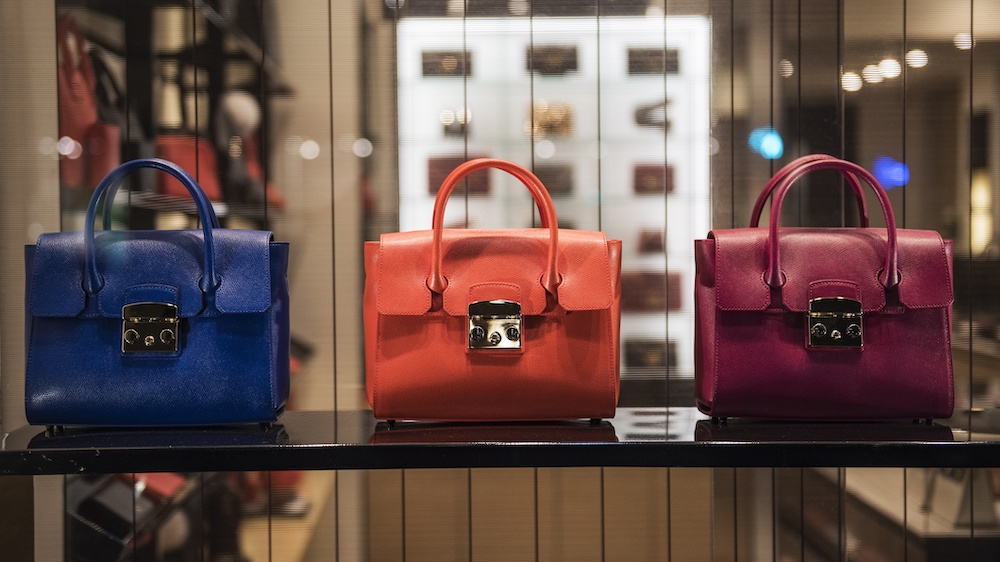If you’re interested in sharing your opinion on any cultural, political or personal topic, create an account here and check out our how-to post to learn more.
____
Often seen on a woman's shoulder or gracing the fashion community's runways, handbags have always been a staple of stature. It is a symbol of affluence, class, elegance and grace. It also holds an interesting position in the cultural aperture of social position. Nonetheless, handbags also have a long history of marginalizing select communities by keeping them out of their reach.
BIPOC persons have always aspired to be included in conversations regarding handbags while at the same time being excluded by it. Thus, it is so important that designers and artists like Brandon Blackwood, Telfar Clemens and Henry Taylor are bringing various new access points when thinking about, viewing and engaging with handbags as BIPOC persons.
First, when thinking about the work of Brandon Blackwood, he is bringing a new way of thinking about social justice in terms of handbag culture. Handbags have always been seen as a clean and easily digestible art form. Straight lines, a little sass, but not much pushback. However, Blackwood's work articulates social justice as necessary even when it comes to the handbags you chose to wear. Blackwood's most prolific handbag, the ESR (End System Racism) Bag, puts it all on the table, not shying away from telling the truth.
In the handbag community, logos and sayings on bags are often looked upon as tacky or trendy. However, Blackwood's use of a saying on his bags brings forth BIPOC people's ability to create dialogue and critique the fashion community and the world around them. While fashion has always been political, it has not always allowed it to be critiqued or questioned by bodies of color. As a result, Blackwood's work is an entry point for BIPOC persons to see that they matter in fashion and have a right to critique and challenge it critically.
In a similar vein, the work of Telfar Clemens has brought BIPOC persons more into the fold of the handbag community. With the launch of his "Shopping Bag," better known as the "Bushwick Birkin," Clemens, since 2014, has created a cultural cache for BIPOC people to see that they have an accessible access point to the handbag community. Most luxury brands have price points for bags that are inaccessible for most, starting from $1,000. Moreover, they are often used as a tool to belittle and police people of color, with retailers treating BIPOC clients handbags as lesser or counterfeit. Thus, Clemens creating a line of bags that start at $150, and stilled viewed as quality and luxury, creates a more equitable vantage-point for BIPOC people to enter the handbag community.
Furthermore, Clemens creating his "Bag Security Program" back in early August this year, has created an obtainable access point for BIPOC people. It is no longer a "necessity" to spend thousands of dollars on a handbag to show elegance and an elevated appearance. Now people have the ability to slay on a budget and still look amazing. Allowing people to secure a bag makes the handbag community more inclusive rather than an uneven playing field for the haves and have nots.
Finally, in a very different way, artists like Henry Taylor are making BIPOC people be seen in the handbag community. Taylor was recently announced as one of six artists selected by Louis Vuitton to create a bag for the second installment of their ARTYCAPUCINES collection.
Each of the artists is given the creative lenses to create their interpretation of the Louis Vuitton Capucines bag. Through his bag, Taylor transposes what he calls “A Young Master,” which is a portrait of his friend and late American painter Noah Davis. Strikingly beautiful and eye-watering, this bag quite literally brings Blackness to the forefront. Illustrating on handbags is nothing new; however, what is new is the ability to see Blackness as worthy of being immortalized onto a bag.
While amongst a cadre of amazing artists recruited by Louis Vuitton, Taylor is the only Black artist. Instead of creating something ethereal or bombastic, he created something visceral, rich and empathetic. By taking Black friends and putting them on Capucines it brought forth a literal window into how Blackness can be a part of the handbag community. Blackness at the forefront allows consumers to understand that BIPOC narratives are multi-dimensional, deserve space and are important to the handbag community.
While handbags have not always been a space that uplifts BIPOC people, having designers and artists like Brandon Blackwood, Telfar Clemens, and Henry Taylor allows for new access points and perspectives to come into the handbag community. For far too long, handbags have only been for the rich and white. It is time to understand how BIPOC people can positively engage with handbags.
